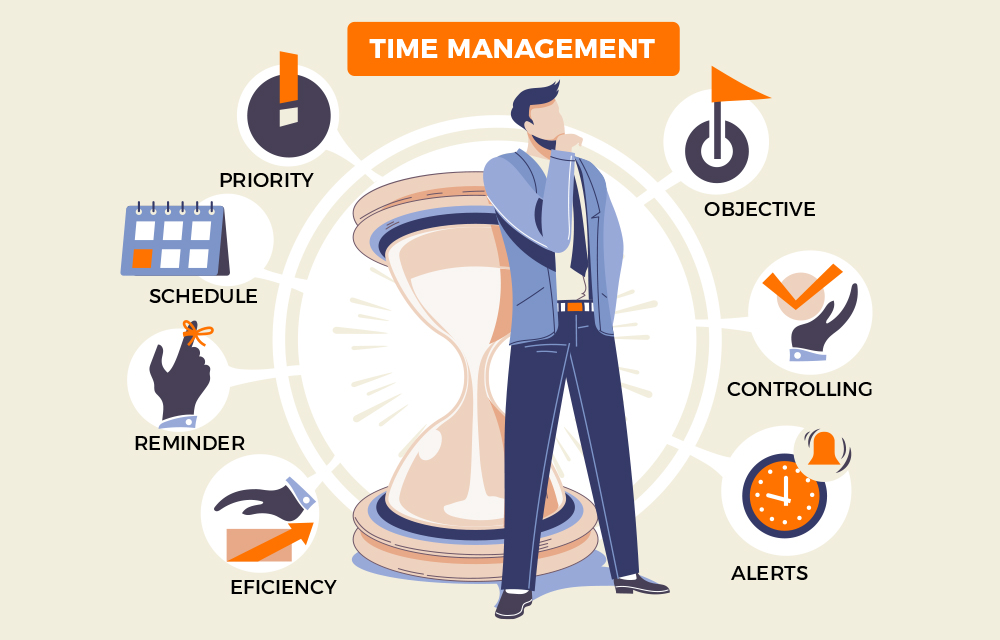In today’s fast-paced and demanding work environment, mastering delegation and time management skills is cruci...
Brickwork Blogs


In the ever-evolving landscape of digital content, storytelling has emerged as a powerful tool to engage audiences, convey messages, and create a lasting impact. From marketing campaigns to educational materials, the role of storytelling in content development cannot be overstated. This comprehensive exploration delves into the significance of storytelling, its impact on audience connection, and practical strategies for integrating narrative elements into content development.
Understanding the Power of Storytelling
1. Emotional Engagement:
Storytelling has a unique ability to evoke emotions and connect with the audience on a personal level. Human beings are wired to respond to narratives, and emotionally resonant stories leave a lasting impression. Whether it's joy, empathy, or inspiration, stories have the power to elicit a wide range of emotions, creating a deeper connection between the content and the audience.
2. Memorable Messaging:
People are more likely to remember information presented in the form of a story compared to facts or data alone. Stories provide context and meaning, making it easier for the audience to retain and recall the information. This memorability is a valuable asset in content development, ensuring that key messages leave a lasting impact.
3. Relatability and Identification:
Storytelling allows for the creation of relatable characters and situations, enabling the audience to see themselves in the narrative. When individuals can identify with the characters or scenarios presented, they are more likely to engage with the content. This sense of relatability fosters a connection between the audience and the story, enhancing the overall impact of the message.
Incorporating Storytelling into Content Development
1. Know Your Audience:
Effective storytelling begins with a deep understanding of the target audience. Knowing the demographics, preferences, and interests of the audience allows content developers to tailor stories that resonate with their specific needs and desires. This audience-centric approach ensures that the narrative connects on a personal level.
2. Define a Clear Message:
Before weaving a narrative, it's crucial to define a clear and concise message. The story should revolve around a central theme or takeaway that aligns with the content's purpose. Whether it's conveying a brand story, explaining a complex concept, or inspiring action, a well-defined message provides a narrative anchor for the content.
3. Create Compelling Characters:
Characters serve as the heart of any story. Whether they are fictional personas or real-life individuals, creating compelling characters adds depth and relatability to the narrative. Develop characters with distinct personalities, motivations, and challenges that the audience can connect with on an emotional level.
4. Establish a Story Arc:
A well-structured story follows a narrative arc, including elements like exposition, rising action, climax, falling action, and resolution. This structure builds anticipation and keeps the audience engaged from beginning to end. Whether crafting a short video or a long-form article, a thoughtfully designed story arc contributes to the overall effectiveness of the narrative.
5. Use Visual Elements:
Visual elements such as images, graphics, and videos complement storytelling by providing a visual representation of the narrative. Visuals enhance the audience's understanding of the story, making it more immersive and engaging. Consider incorporating multimedia elements that align with the tone and message of the narrative.
6. Embrace Authenticity:
Authenticity is a cornerstone of compelling storytelling. Whether sharing personal experiences or conveying a brand's journey, authenticity creates a genuine connection with the audience. People respond positively to stories that feel real and authentic, fostering trust and credibility.
7. Foster a Sense of Curiosity:
Intrigue and curiosity are powerful motivators for audience engagement. Develop narratives that pique the audience's interest and encourage them to explore further. Pose questions, introduce mysteries, or create a sense of suspense to keep the audience invested in the unfolding story.
Storytelling Across Various Content Formats
1. Blogging and Articles:
In the realm of written content, storytelling adds a dynamic layer to blog posts and articles. Introduce anecdotes, real-life examples, or case studies to illustrate key points. Use a conversational tone to make the narrative more accessible to readers.
2. Video Content:
Video content provides a rich canvas for storytelling. From short narratives to longer documentaries, videos can convey emotions, showcase visuals, and bring stories to life. Incorporate storytelling elements in scripting, editing, and visual effects to maximize impact.
3. Social Media Campaigns:
Social media platforms offer a unique opportunity for storytelling in bite-sized formats. Use concise and engaging narratives in captions, stories, or short videos to captivate audiences scrolling through their feeds. Encourage user participation by inviting them to share their own stories related to the content.
4. Marketing Collaterals:
Marketing materials, such as brochures, pamphlets, or infographics, can benefit from storytelling to make them more compelling. Craft narratives that highlight the value proposition, showcase customer success stories, or communicate the brand's mission and values.
5. Presentations and Slides:
Even in a corporate or educational setting, storytelling can enhance presentations and slides. Structure information in a narrative format, use storytelling techniques in public speaking, and incorporate visuals to make presentations more engaging and memorable.
Measuring the Impact of Storytelling
1. Engagement Metrics:
Assessing engagement metrics, such as time spent on content, click-through rates, and social media interactions, provides insights into how well the audience is responding to the storytelling elements. Increased engagement often indicates a strong connection with the narrative.
2. Audience Feedback:
Monitor audience feedback through comments, reviews, and surveys. Pay attention to how the audience is responding to the storytelling aspects of the content. Positive feedback suggests that the narrative is resonating, while constructive criticism can guide improvements.
3. Conversion Rates:
For content with a call-to-action, track conversion rates to evaluate the impact of storytelling on desired outcomes. Whether the goal is to drive sales, subscriptions, or participation, a well-crafted narrative can influence audience behavior and decision-making.
4. Brand Perception:
Storytelling plays a significant role in shaping brand perception. Conduct brand surveys or monitor social media sentiment to gauge how the audience perceives the brand's narrative. Positive brand associations resulting from storytelling efforts contribute to long-term brand loyalty.
The Future of Storytelling in Content Development
As technology continues to advance, the future of storytelling in content development holds exciting possibilities. Emerging technologies such as virtual reality (VR) and augmented reality (AR) offer immersive storytelling experiences, allowing audiences to engage with narratives in unprecedented ways. Interactive storytelling, personalized narratives tailored to individual preferences, and the integration of artificial intelligence for dynamic storytelling are among the evolving trends shaping the future landscape.
In the realm of content development, storytelling stands as a dynamic and indispensable tool for creating meaningful connections with audiences. By understanding the power of emotional engagement, employing strategic narrative techniques, and embracing authenticity, content developers can elevate their creations from mere information to compelling stories that leave a lasting impact. Whether through written articles, captivating videos, or immersive social media campaigns, the role of storytelling in content development transcends industries and platforms, providing a timeless and powerful means of communication in the digital age. As technology continues to evolve, the art of storytelling will undoubtedly evolve with it, shaping the way we communicate, connect, and share narratives in the years to come.

How can Brickwork help you?
By leveraging the expertise of Brickwork ,businesses can create a strong narrative connection with their audience, fostering brand loyalty and long-term engagement. The Brickwork team becomes an integral part of the content development process, ensuring that the narrative aligns with the brand's identity and effectively communicates with the target audience. To learn more about our services, reach out to us today!


